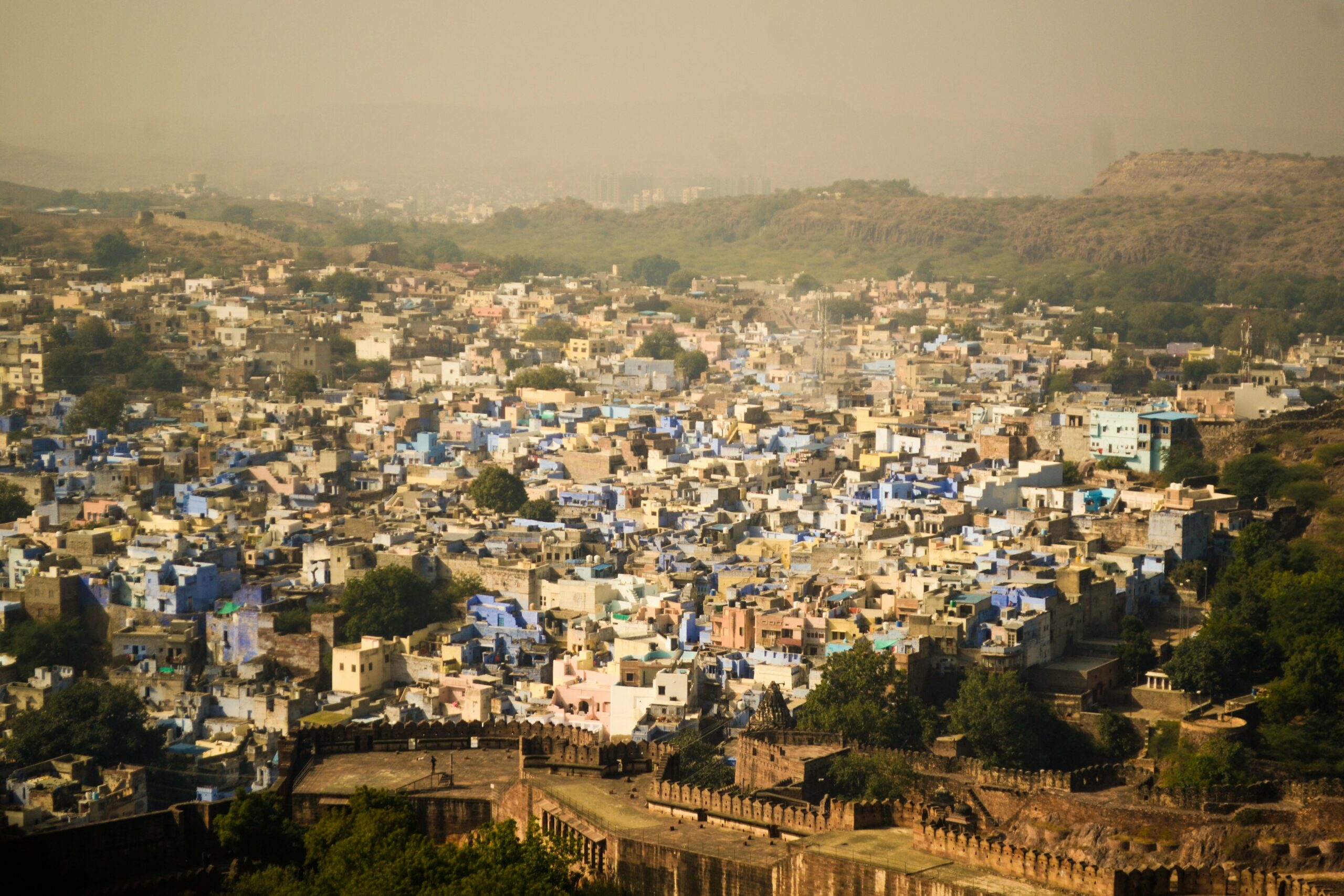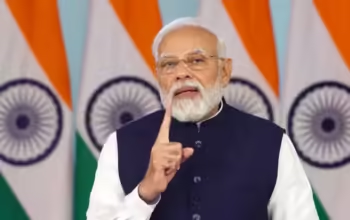Introduction to the 2024 Cabinet
The Indian Cabinet of 2024, under the leadership of Prime Minister Narendra Modi, marks a significant chapter in the nation’s political landscape. The formation of this cabinet is a result of the general elections held in 2024, which saw the Bharatiya Janata Party (BJP) securing another term in office. This victory underscored the continued support for Modi’s governance and his vision for India’s future.
The current cabinet is composed of experienced politicians and technocrats, reflecting a blend of continuity and change. It is designed to address the multifaceted challenges facing the country, from economic recovery post-pandemic to advancements in technology and infrastructure. The selection of ministers aims to bring a balanced approach to policymaking, ensuring that both seasoned leaders and fresh faces contribute to the governance process.
Key developments leading to the formation of the 2024 cabinet include strategic electoral alliances and a strong campaign focused on development, national security, and social welfare. The BJP’s manifesto emphasized economic growth, job creation, and rural development, which resonated with a broad spectrum of the Indian populace. Additionally, the cabinet’s composition signifies an effort to ensure regional representation and inclusivity, catering to the diverse demographic fabric of India.
Under Modi’s leadership, the cabinet is expected to push forward with a reform-oriented agenda. This includes initiatives aimed at enhancing India’s global standing, improving domestic industries, and fostering innovation. The cabinet’s formation also signals a commitment to maintaining stability and continuity in governance, crucial for implementing long-term projects and policies.
Overall, the 2024 Cabinet of India is poised to navigate the complexities of contemporary governance with a focus on progressive change, reflecting Narendra Modi’s vision for a robust and resilient India. The blend of experience and new perspectives in the cabinet is anticipated to drive the nation towards sustained growth and development.
Key Cabinet Ministers: An Overview
The 2024 Cabinet Ministers of India showcase a diverse array of talent and expertise, reflecting the dynamic governance of the country. Among the notable figures, Ram Mohan Naidu, Nitin Gadkari, Rajnath Singh, and Piyush Goyal stand out for their significant contributions and pivotal roles in the administration.
Ram Mohan Naidu, serving as the Minister of State for Finance, has been instrumental in spearheading economic reforms aimed at enhancing fiscal stability and promoting sustainable growth. His innovative approaches to financial inclusion and digital banking have been lauded for making financial services more accessible to the underprivileged sections of society.
Nitin Gadkari, the Minister for Road Transport and Highways, continues to be a driving force behind India’s infrastructure development. Under his leadership, the country has seen an unprecedented expansion of highways and expressways, significantly improving connectivity and boosting economic activities. His vision for sustainable and eco-friendly transportation solutions has also led to the adoption of electric vehicles and alternative fuels.
Rajnath Singh, the Minister of Defence, has played a crucial role in strengthening India’s defense capabilities. His tenure has been marked by significant modernization of the armed forces, enhancement of indigenous defense production, and forging strategic international partnerships. His efforts have been pivotal in ensuring national security and maintaining India’s strategic autonomy.
Piyush Goyal, as the Minister of Commerce and Industry, has been at the forefront of driving India’s trade policies and industrial growth. His initiatives to streamline regulatory frameworks and promote ease of doing business have attracted substantial foreign investments. Additionally, his focus on supporting small and medium enterprises (SMEs) has been vital in fostering innovation and entrepreneurship across the nation.
These key cabinet ministers, through their dedicated efforts and strategic vision, continue to shape the trajectory of India’s development, ensuring a robust and resilient future for the nation.
New Additions to the Modi Cabinet
The 2024 cabinet reshuffle under Prime Minister Narendra Modi has introduced several new faces, reflecting a strategic blend of experience and fresh perspectives. Among the notable new additions are Anurag Thakur and Ashwini Vaishnaw, whose appointments carry significant implications for India’s political and economic landscape.
Anurag Thakur, a prominent figure within the Bharatiya Janata Party (BJP), has been entrusted with a key ministerial role. Thakur’s political career has been marked by his tenure as the Minister of State for Finance and Corporate Affairs, where he played a pivotal role in shaping fiscal policies. His new appointment is seen as a move to leverage his financial acumen and leadership skills in addressing the country’s economic challenges.
Ashwini Vaishnaw, another significant addition, brings a wealth of experience from both the public and private sectors. A former Indian Administrative Service (IAS) officer, Vaishnaw has held various crucial positions, including serving as the District Magistrate of Balasore and Cuttack in Odisha. His transition to the private sector saw him in leadership roles at Siemens and GE Transportation. Vaishnaw’s appointment as a cabinet minister is particularly noteworthy given his technical expertise and administrative capabilities, which are expected to drive substantial reforms in infrastructure and technology sectors.
Other new entrants to the cabinet include individuals with diverse backgrounds and expertise, aimed at fortifying the government’s approach to governance. Their appointments signify a strategic intent to incorporate innovative ideas and efficient governance practices. The inclusion of these new ministers is anticipated to bring a dynamic shift in policy-making, with a focus on economic rejuvenation, technological advancement, and inclusive development.
Overall, the new additions to the Modi cabinet underscore a balanced approach, combining seasoned political veterans with fresh talent, thereby reinforcing the government’s commitment to a progressive and development-oriented agenda for India’s future.
Ministry Distribution: A Detailed Breakdown
The 2024 cabinet reshuffle in India has been a topic of significant discussion, with strategic allocation of portfolios reflecting the government’s priorities and vision for the country’s future. The Ministry of Home Affairs, a critical pillar of national security and internal affairs, has been entrusted to a seasoned politician with a strong record in law enforcement and public administration. This choice underscores the government’s commitment to maintaining internal stability and addressing security challenges.
Another key ministry, the Ministry of Finance, has seen the appointment of an individual known for their expertise in economic policy and fiscal management. This selection is indicative of the administration’s focus on economic growth, financial reforms, and sustainable development. The Finance Minister’s role in shaping the economic landscape through budget formulation, taxation policies, and financial regulations will be crucial in the coming years.
The Ministry of Defense has been allocated to a leader with extensive experience in military affairs and defense strategy. This appointment highlights the government’s emphasis on strengthening national defense capabilities, modernizing the armed forces, and enhancing strategic partnerships on a global scale. The Defense Minister’s role will be pivotal in ensuring the nation’s security and preparedness in an increasingly volatile geopolitical environment.
The Ministry of External Affairs has been assigned to a diplomat with a robust background in international relations and foreign policy. This strategic choice reflects the government’s intention to bolster India’s position on the global stage, foster diplomatic ties, and engage in multilateral forums. The appointment aims to navigate complex international dynamics and promote India’s interests abroad effectively.
Overall, the distribution of ministries in the 2024 cabinet is a clear manifestation of the government’s strategic priorities. By placing experienced and capable leaders in key positions, the administration aims to address critical issues, drive policy reforms, and steer the nation towards a path of progress and development.
Profiles in Leadership: Notable Ministers
India’s 2024 cabinet boasts a roster of seasoned politicians, each bringing a unique blend of experience and vision to their respective roles. Notable among them are Dharmendra Pradhan, JP Nadda, and Shivraj Singh Chauhan. Their political careers, landmark achievements, and current responsibilities add significant value to the governance landscape.
Dharmendra Pradhan, currently serving as the Minister of Education, has been a pivotal figure in Indian politics. With roots in the Bharatiya Janata Party (BJP), Pradhan has previously held significant portfolios including Petroleum and Natural Gas, and Skill Development and Entrepreneurship. Under his tenure, India’s education sector has witnessed substantial reforms, particularly in higher education and vocational training. His initiatives have aimed at making education more inclusive and accessible, aligning with the vision of a “New India.”
JP Nadda, the Minister of Health and Family Welfare, has a long-standing history with the BJP. A veteran politician, Nadda’s leadership has been instrumental in steering India’s healthcare policies. His tenure has seen the successful implementation of the Ayushman Bharat scheme, the world’s largest government-funded healthcare program, which has provided health coverage to millions of Indians. Nadda’s focus on strengthening the healthcare infrastructure and addressing public health challenges has been commendable, particularly during the COVID-19 pandemic.
Shivraj Singh Chauhan, serving as the Minister of Agriculture and Farmers Welfare, is another notable figure in the cabinet. A seasoned leader with multiple terms as the Chief Minister of Madhya Pradesh, Chauhan’s expertise in agrarian policies is well recognized. His leadership has brought forth several farmer-centric initiatives, aimed at enhancing agricultural productivity and ensuring sustainable farming practices. Chauhan’s commitment to the welfare of the farming community continues to reflect in his policies and reforms.
These ministers, with their vast experience and strategic vision, play crucial roles in shaping India’s policy landscape. Their contributions are integral to the nation’s progress, driving forward key initiatives and reforms across their respective domains.
In the intricate tapestry of India’s federal structure, regional leaders play a pivotal role in shaping the national cabinet’s dynamics. These leaders, hailing from various states, bring with them distinct regional perspectives and priorities that can significantly influence national policies and governance. Prominent among these regional figures are individuals like Manohar Lal Khattar and HD Kumaraswamy, whose political acumen and leadership have made notable impacts on both their home states and the broader national landscape.
Manohar Lal Khattar, the Chief Minister of Haryana, is a noteworthy example of a regional leader whose policies and governance style have reverberated at the national level. Khattar’s focus on development, particularly in terms of infrastructure and digital governance, has set benchmarks that have been looked upon favorably by the central administration. His efforts in enhancing Haryana’s agricultural productivity and industrial growth have not only uplifted the state’s economy but also contributed to broader national economic strategies. Khattar’s alignment with national objectives while addressing regional needs underscores the symbiotic relationship between state and central governance.
Similarly, HD Kumaraswamy, a prominent leader from Karnataka, illustrates the significant influence of regional politics on national governance. Kumaraswamy’s tenure as Chief Minister saw initiatives aimed at improving rural livelihoods and boosting the state’s technological prowess. His approach to coalition politics and negotiation skills have been instrumental in shaping national policies, especially in sectors such as agriculture and information technology. Kumaraswamy’s contributions highlight the importance of regional leaders in driving policy reforms that resonate with both state and national priorities.
The intersection of regional politics with national governance is further exemplified by the collaborative efforts between state leaders and the central cabinet. These interactions ensure that the diverse needs of India’s vast population are addressed, promoting a more inclusive and representative form of governance. Regional leaders like Khattar and Kumaraswamy exemplify the crucial role that state-level leadership plays in influencing and enhancing national policy frameworks, contributing to the overarching goal of holistic national development.
Challenges and Opportunities for the New Cabinet
The 2024 Cabinet Ministers of India face a complex landscape marked by significant challenges and opportunities. One of the foremost challenges is the economic situation. The Indian economy, while recovering from the pandemic, still grapples with inflation, unemployment, and the need for sustainable growth. The new cabinet must prioritize fiscal policies that stimulate economic activity while keeping inflation in check. This may involve revisiting tax structures, encouraging foreign investment, and promoting small and medium enterprises (SMEs) to foster job creation.
International relations present another critical area of focus. As India navigates its role on the global stage, the cabinet must address issues related to trade, defense, and diplomatic ties. Strengthening relationships with key allies, such as the United States and European nations, while managing strategic partnerships with neighboring countries, particularly China and Pakistan, will be crucial. Additionally, India’s participation in global forums and organizations, such as the United Nations and the World Trade Organization, will require adept handling to promote national interests.
On the domestic front, the cabinet faces the challenge of addressing social issues, including healthcare, education, and infrastructure development. The healthcare sector, in particular, demands urgent attention to enhance accessibility and quality, especially in rural areas. Education reforms aimed at bridging the digital divide and improving the quality of education will be essential. Infrastructure development, encompassing transport, energy, and digital infrastructure, will play a pivotal role in driving economic growth and improving the quality of life for citizens.
Despite these challenges, the cabinet also has significant opportunities to enact transformative policies. The emphasis on digital initiatives and technology can propel India forward as a global leader in innovation. Policies promoting green energy and sustainability can position India as a key player in combating climate change. Moreover, leveraging the demographic dividend by investing in youth and skill development can create a robust workforce ready to meet future demands.
The 2024 Cabinet Ministers, under the current leadership, have a unique opportunity to implement strategic reforms that can steer India towards a path of inclusive and sustainable growth. By addressing economic, international, and domestic challenges with innovative solutions, the cabinet can harness the potential of India’s diverse and dynamic landscape.
Concluding Thoughts on Modi 3.0 Cabinet
The 2024 cabinet of India, under the leadership of Prime Minister Narendra Modi, marks a significant phase in the country’s political landscape. The composition of Modi 3.0 cabinet reflects a strategic blend of experienced politicians and fresh faces, aimed at addressing the multifaceted challenges that India faces today. Key appointments in crucial ministries such as Finance, Home Affairs, and Defense underscore the administration’s commitment to economic revitalization, internal security, and national defense.
One of the salient features of this cabinet is its emphasis on inclusivity and regional representation. By incorporating leaders from diverse states and backgrounds, the government seeks to foster a sense of unity and equitable development across the nation. This approach not only strengthens the federal structure but also ensures that the voices of various communities are heard at the highest levels of decision-making.
Moreover, the focus on technological advancement and digital transformation continues to be a cornerstone of the Modi administration. The appointment of ministers with a robust background in technology and innovation is indicative of the government’s resolve to position India as a global leader in the digital economy. Initiatives aimed at enhancing digital infrastructure, promoting startups, and advancing research and development are expected to drive economic growth and create job opportunities.
Looking ahead, the trajectory of Indian politics under the current administration appears to be geared towards achieving a balance between economic progress and social welfare. The government’s policies and programs are likely to focus on uplifting the underprivileged, improving healthcare and education, and ensuring sustainable development. However, the effectiveness of these initiatives will hinge on the administration’s ability to navigate complex political dynamics and maintain public trust.
In essence, the Modi 3.0 cabinet embodies a vision of a progressive and resilient India, poised to tackle contemporary challenges while striving for holistic development. The coming years will be crucial in determining how these aspirations translate into tangible outcomes for the nation.



